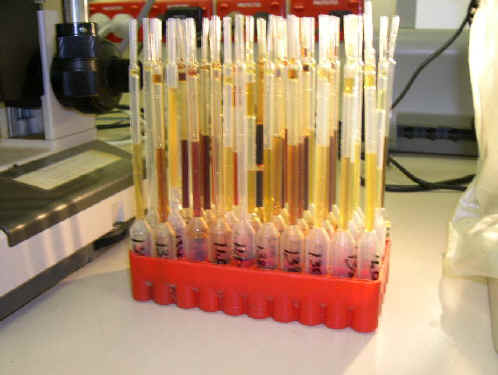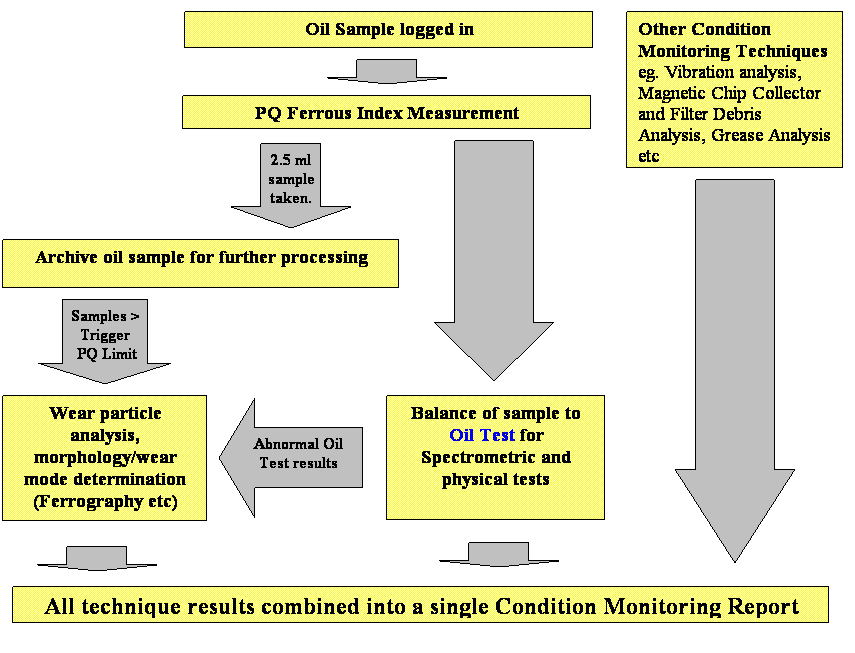
ISS-Machine Health
Oil Analysis
The analysis of used
lubricants from machines is performed primarily for two reasons: -

to establish the wear condition of the machine and;
to ensure the oil condition is satisfactory for further use.
1. Oil Sampling.
ISS staff generally collect customers oil samples when on site at the same time as gathering vibration data. Care has to be taken to ensure that any oil sample is truly representative (Sampling instructions) of the machine.
2. Analysis
ISS Machine Health believes that supplementing routine oil analysis with a wear particle analysis technique such as Ferrography really enhances the value of the results as a condition monitoring tool. Routine oil analysis presents the wear rate indicated only by particles typically <8Ám, while wear particle analysis classifies the wear mode; the prognosis based on the combined results can be far more specific.
The flow chart below shows the ISS Machine Health procedure for analysing a routine oil sample.

Unfortunately, wear particle analysis of an oil sample is a very time consuming procedure and so is significantly more costly to provide than routine oil analysis. To keep the cost of our routine oil samples down, ISS Machine Health uses wear particle analysis only on those samples showing abnormal metal levels, usually this amounts to about 10-15% of the oil samples processed. The cost of the wear particle analysis is then amortised across all the samples.
Some customers choose to have wear particle analysis done on their oil samples every time. There are many reasons for this, current examples include:-
Plant with a very high down time cost or safety implications.
Where the known wear/failure modes generate particles too big (>8Ám) for routine oil analysis techniques.
Machines where the wear problems are being investigated.
Tribology research.
There are three levels of oil analysis provided by ISS Machine Health:-
Level 1 Routine oil analysis.
Level 2 Routine oil analysis, plus wear particle analysis on all samples exceeding an agreed PQ Ferrous trigger level.
Level 3 Routine oil analysis with wear particle analysis on all samples.
3. In-house Oil Analysis ISS Capabilities
ISS has the following in house techniques available for oil analysis
Laser scanning 5 channel particle counting to ISO 4406.
Water Determination down to ppm level (Karl Fischer).
Viscosity Determination.
Dielectric Oil Condition Monitoring.
PQ Index.
Filter Patch.
Ferrography.